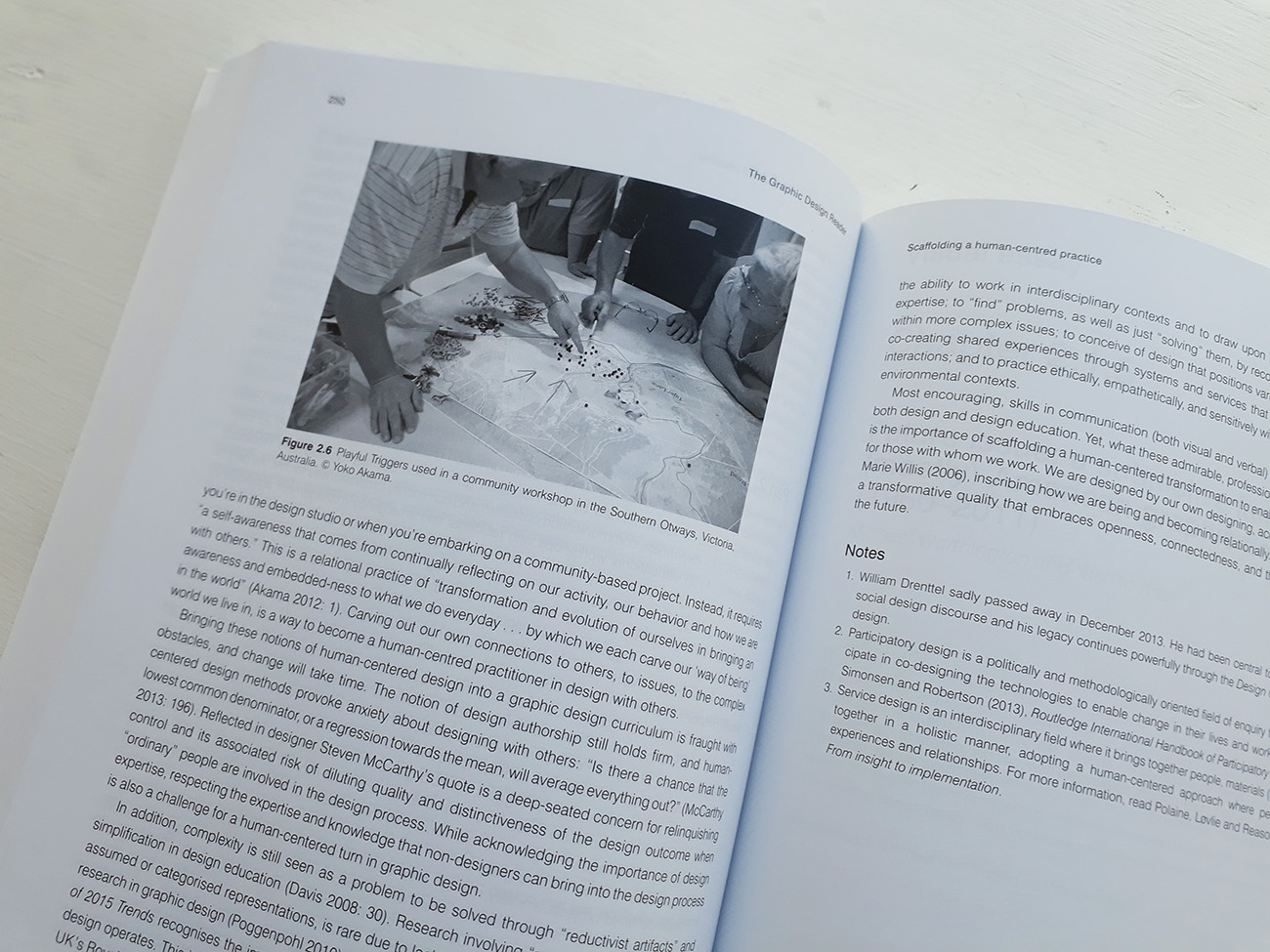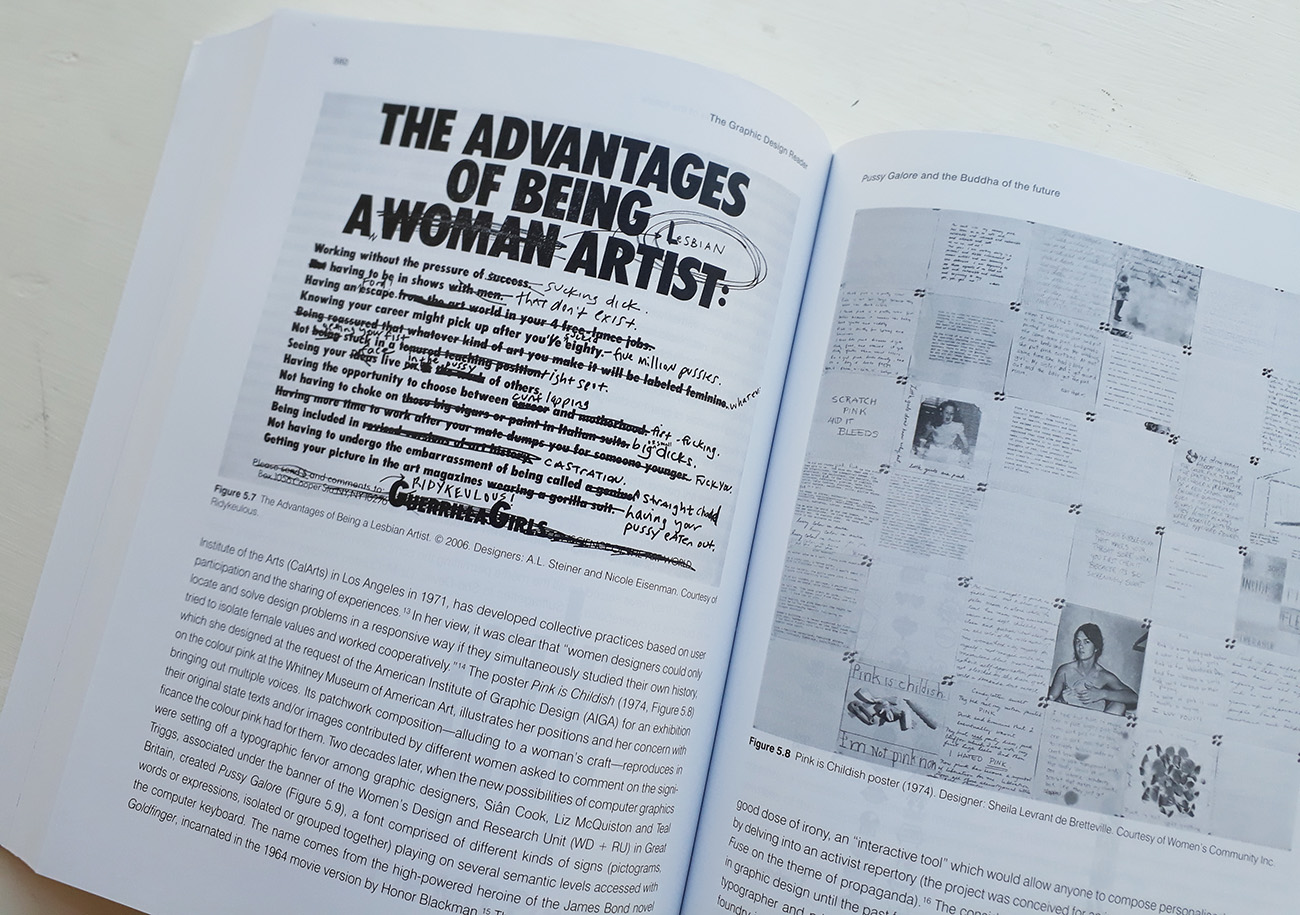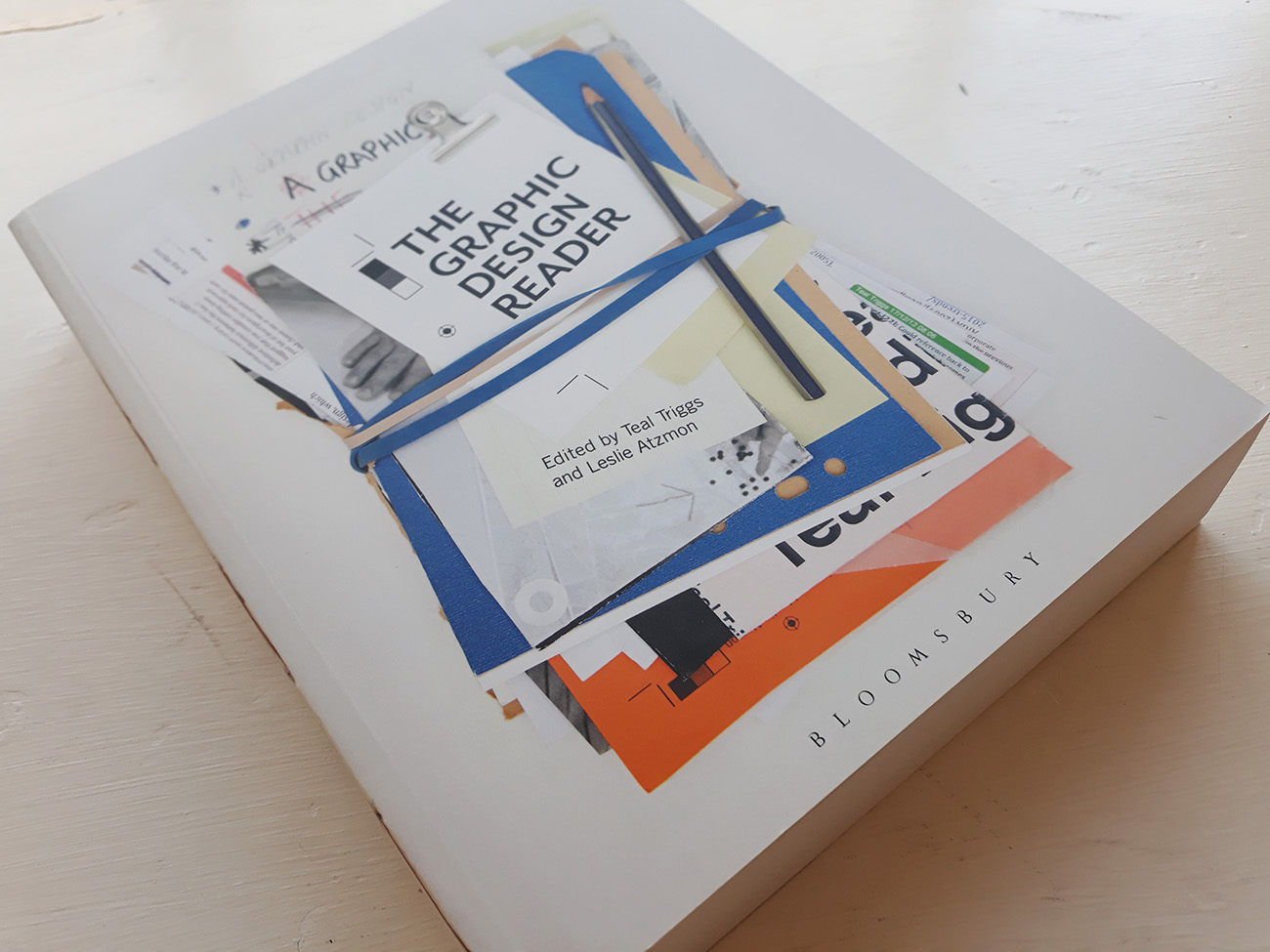The Graphic Design Reader – Book Review
Edited by Teal Triggs & Leslie Atzmon
Published by Bloomsbury ISBN: HB: 978-1-4725-3620-4 PB: 978-1-4725-2647-2
Reviewed by Karl Andy Foster
This scholarly and engaging collection of key readings provides an excellent body of work for those who wish to understand how the subject of graphic design is moving from a field towards a discipline. You will learn that graphic design is everywhere, even when it’s invisible!
Asking a designer to ‘rewire’ their thinking and notions of the ego
When I trained as a graphic designer more than 30 years ago my main concern was how to make the best work and how these efforts would help me to pay my bills. I had no notion of how my work would be appreciated beyond the D&AD and British and European illustration award systems. I seldom attempted to go beneath the surface of the subject but instead I praised the surface. Things have changed a great deal since then and it’s important to see that there is a complimentary area of study that all graphic designers need to reflect upon. If the subject is to have continued relevance in a world that’s facing multiple challenges we need to be ready for change.

Chapter headings, including the currency of education, the profession, type and typography and political and social change place this publication firmly in the worlds of professional making and knowledge dissemination. There is certainty about where graphic design might be heading. This book is an archive of the best in writing on the subject from the last 140 years beginning with William Morris and the Kelmscott Press (1888). It will be of interest to students of design, academics and other scholars. The Essays that range over seven chapters are drawn from those who have worked in the creative industries, educational and philosophical arenas.
The contributors to The Graphic Design Reader are impressive. Anil Aykan Barnbrook, Peter Bil’ak, Joanna Choukeir, Ken Garland, Anna Gerber, Jessica Helfand, Steven Heller, Ellen Lupton and William Morris to name but a few covering history, innovations, pedagogy and philosophy as well as the practical applications of this complex way of being. The editors have taken the time to find sources that will surely encourage further comment.

The status quo is not an option
They attempt to put a marker down for future scholars of the subject. Graphic Design has found a way to remain relevant and integrated into the everyday experiences of people’s lives globally. The discovery of how ideas were explored by embracing this multi-dimensional medium will help designers to embrace the analysis of their own work. The philosophical and psychological impact of graphic designer on its creators and readers is also covered in great detail.
When a scholar exposes the cultural, political and economic context of a dynamic industry might there still be room for the subjective? The Reader explores how we can use personal agency to help us to pursue answers to the complex problems facing designers today. This book forensically covers the alternatives to the status quo, suggesting that the theoretical must become an integral part of their personal and professional approach to graphic design and all future activities.

In conclusion
This Graphic Design Reader is a great introduction for design students covering as it does the arguments and philosophies surrounding this subject and its future directions. The essays and manifestos support the challenge of spreading understanding to an audience. We all need to be better equipped to take the subject forward into a discipline.
This book can be used to guide post-graduate design students through the arguments, practices and concepts from the world of communication design. It will also help them to understand what is happening out in industry and provide them with inspiration for further reading and research. It encourages us to be bold – so let’s see what’s out there.
Back to News Page

